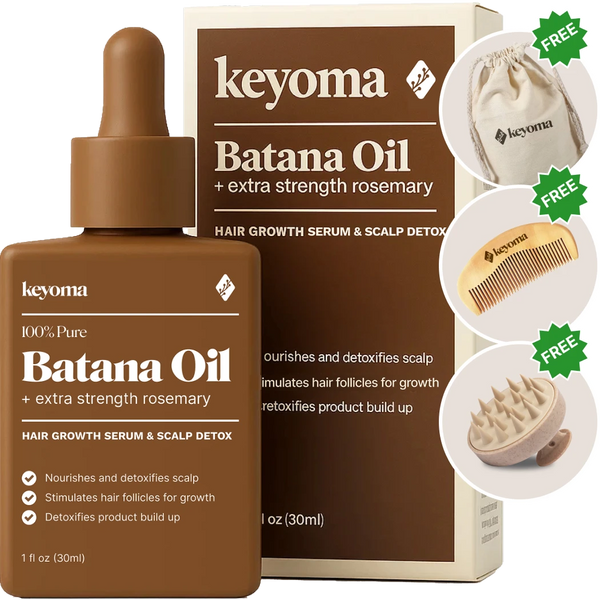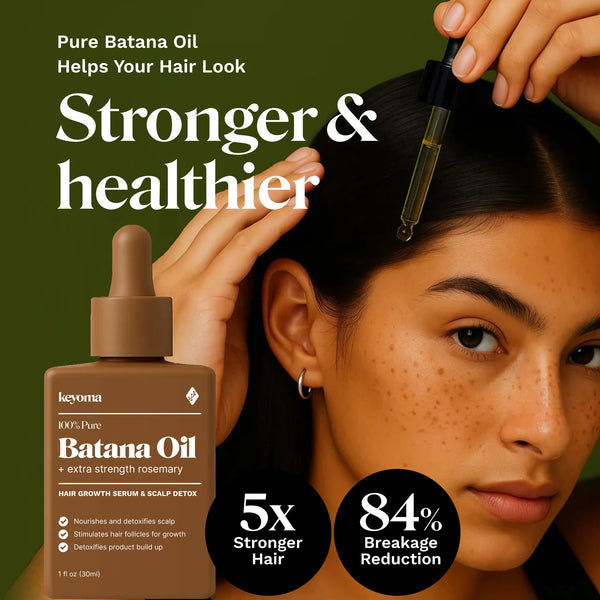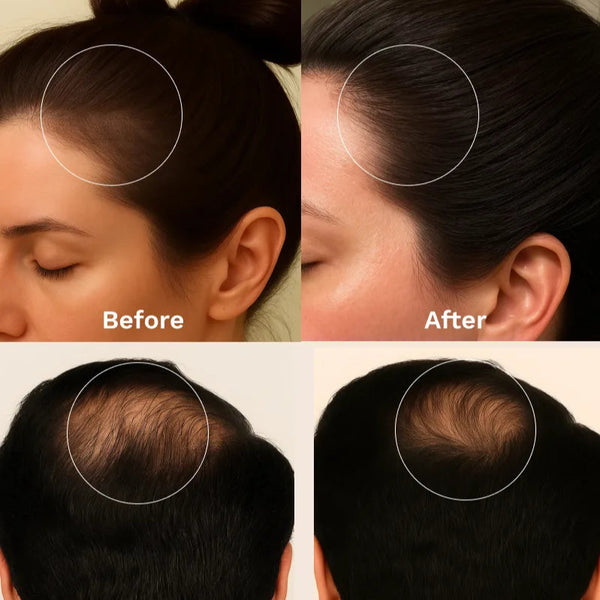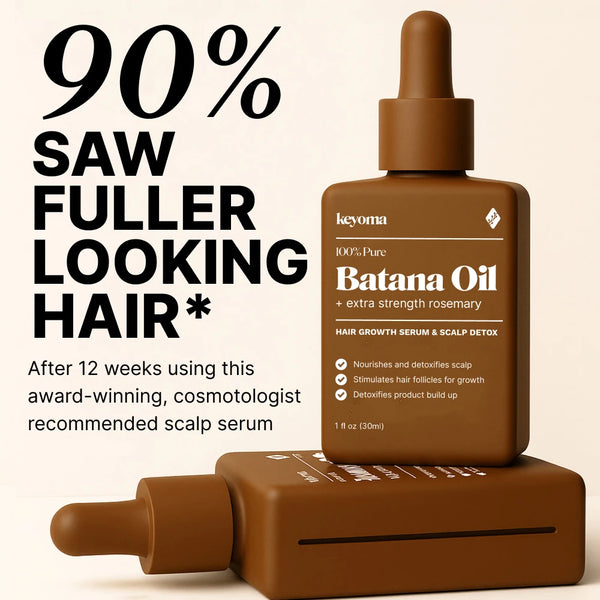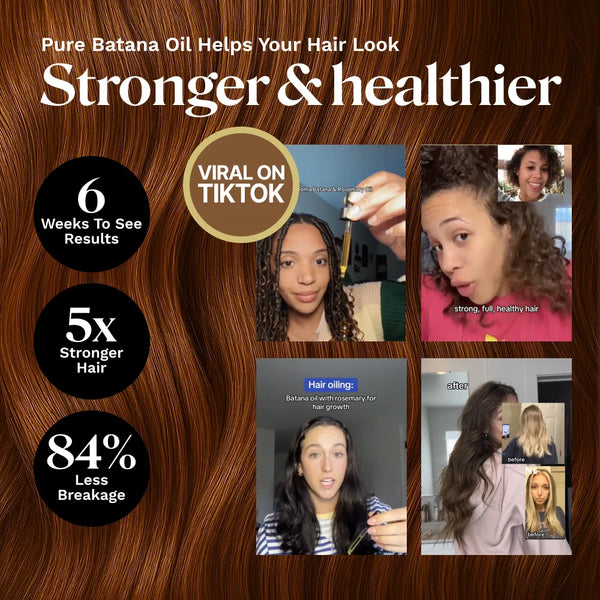Does Bee Venom Help With Hair Loss? The Science Behind Why This Must-Try Treatment Works
Published on
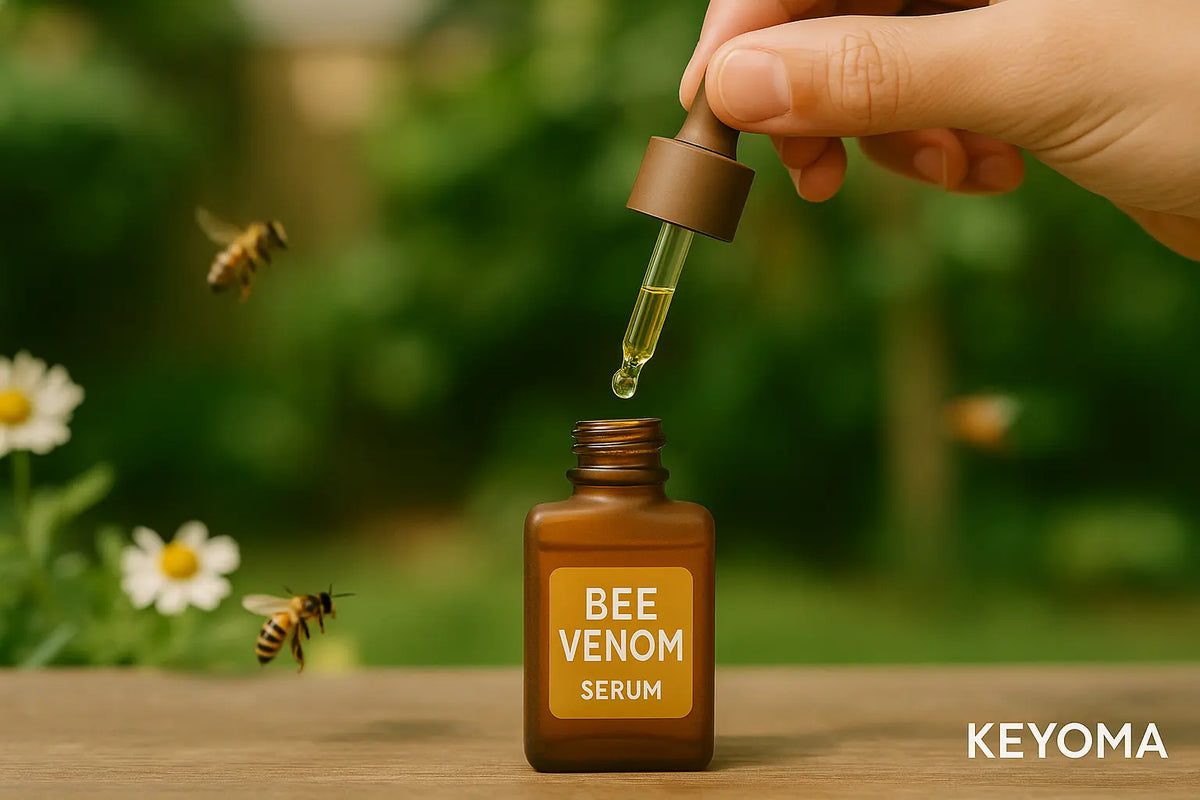
In this article
You might be here because your hair’s been thinning and every “miracle cure” you’ve tried—or at least read about—has left you disappointed. And honestly, I wouldn’t blame you if right now you’re rolling your eyes and thinking, “Not another trend.”
But the thing is, bee venom isn't just another trend. I can proudly say that, having tried and experienced the benefits myself. But of course, don't just take my word for it.
Research has shown how bee venom can affect the very processes tied to hair growth and hair loss. That’s exactly what I’ll walk you through in this article. Let’s get into it!
Key Takeaways
-
Bee venom can block DHT, the hormone tied to pattern baldness, and keep follicles in their growth phase.
-
It shows anti-inflammatory and healing effects on the scalp, creating a healthier base for hair.
-
Low cosmetic-level doses of bee venom are proven to be safe for topical use, but patch testing is still a must.
6 Ways Bee Venom Helps With Hair Loss (and the Research Behind Them)
Pushes Follicles Back Into Growth Phase
For a bit of context, hair doesn’t grow nonstop (obviously). It cycles through resting (telogen) and growing (anagen) phases. Balding and thinning happen when too many follicles get “stuck” resting instead of growing.
A 2024 Toxins paper reported that pre-treating human adipose-derived stem cells (ASCs) with bee venom sped up the telogen-to-anagen switch—the shift from resting to active growth.
Researchers then tested this further by injecting those pre-treated cells into the skin of mice. The result? A measurable increase in overall hair weight!
To put it plainly, the group treated with bee venom grew about nearly five times more than the ones left untreated.
Of course, this study was done in a lab setting with animals as subjects, not humans. Even so, the exciting part is that it shows bee venom has a natural ability to “wake up” follicles, and that’s exactly the potential we’re tapping into.
Blocks DHT-Driven Hair Loss
DHT, or dihydrotestosterone, is the hormone most often tied to female- and male-pattern baldness as it binds to receptors in the scalp and causes follicles to shrink.
Bee venom helps by slowing down DHT activity. It does so by suppressing the enzyme 5α-reductase, the very enzyme that converts testosterone into DHT. By reducing this conversion, bee venom lowers the hormonal pressure that leads to shrinking follicles and receding hairlines.
This was demonstrated in animal studies, particularly on mice, where topical application of bee venom at very low concentrations (0.001%) not only reduced 5α-reductase activity but also kept follicles in their active growth phase.
In fact, the same study found bee venom outperformed 2% minoxidil in terms of hair regrowth results. That says a lot, considering minoxidil is the go-to standard in most hair loss treatments.
That said, it shows that bee venom can be effective even when used topically, making it a promising ingredient for real-world hair products.
Improves Scalp Wound Healing
One overlooked piece of the hair loss puzzle is the condition of the scalp itself. When the skin is inflamed, poorly healed, or scarred, follicles struggle to stay active. Bee venom has shown promise in helping the skin regenerate in a way that gives hair a healthier foundation to grow from.
An earlier study published in Journal of Plastic, Reconstructive & Aesthetic Surgery tested bee venom on mice with full-thickness skin wounds.
The results were telling: wounds treated with bee venom closed faster than controls, showed lower levels of inflammation markers (like TGF-β1 and fibronectin), and had stronger collagen formation in the skin.
In simple terms, the venom helped the skin repair itself more efficiently, with less scarring and better tissue structure.
Why does this matter for hair? Because the scalp is skin too. Chronic inflammation, scarring, or weak collagen support are all enemies of follicles.
Conditions like scarring alopecia, psoriasis, or even long-term irritation can damage the follicle’s environment and make hair loss worse. By promoting balanced healing and a stronger scalp structure, bee venom could indirectly protect follicles, keeping the “soil” fertile so hair can thrive.
With all that said, bee venom’s link to follicle health here is indirect, and so far, studies are in animals. Still, the mechanism is biologically reasonable, and there's real potential worth exploring further.
Supports Safe Scalp Application
For any topical ingredient to be taken seriously for hair loss, safety on the skin has to come first. Thankfully, bee venom passes that test.
In a 2020 study, researchers applied a hair essence containing 0.05% purified bee venom to rabbits’ skin and eyes to check for any effects like redness, swelling, and any lasting irritation.
The results? Only slight temporary skin irritation was noted, and the eyes showed no lasting reaction. This concluded that bee venom in low, cosmetic-level amounts is generally safe for topical use.
Now, this study doesn't directly prove hair regrowth. What it did confirm is the idea that a hair-care formula containing bee venom can be applied safely to the skin.
That means if you come across a hair care product with bee venom listed on the label, you can reasonably expect it to sit on your scalp without causing serious irritation.
And I'd argue that this kind of study is just as important as those bee venom studies directly tied to hair growth. After all, without proving bee venom can rest on the scalp without causing harm, the rest of its hair-friendly benefits wouldn’t matter at all.
Calms Scalp Acne Inflammation
One study published in the International Journal of Molecular Medicine tested bee venom against inflammation caused by Propionibacterium acnes—the same bacteria tied to acne. Researchers exposed human skin cells to the bacteria, which predictably spiked inflammatory messengers.
When bee venom was introduced, even at very low doses, those inflammatory signals (like IL-1β, TNF-α, and IL-8) dropped significantly. Bee venom also suppressed TLR2, the “sensor” that sets off the skin’s inflammatory response.
In plain human language, bee venom calmed irritation right at the cellular level.
Now, this wasn’t a scalp-specific study, but the mechanism is highly relevant. Scalp acne, or folliculitis, is driven by the same bacteria and inflammatory pathways.
So, the ability of bee venom to reduce those signals suggests it could help keep follicles less stressed and the scalp environment more supportive of growth—lowering the chance of hair loss down the line.
Helps Slow Hair Graying
In a 2007 study (International Journal of Molecular Medicine), scientists exposed normal human melanocytes (the pigment-producing cells) to bee venom in lab dishes. They found that bee venom:
-
Encouraged melanocytes to grow in number steadily across time and dose.
-
Boosted melanin production—the pigment that gives hair its color—by increasing tyrosinase, the key enzyme that makes melanin.
-
Helped the cells stretch out, develop dendrites (the “branches” that transfer pigment), and migrate by activating natural cell signals that guide their movement.
Simply put, bee venom strengthens the color-making machinery in pigment cells and helps them move toward the hair follicle. Otherwise, when this process slows down, that’s when gray hair usually begins.
Okay, bee venom helps with graying hair. But what does that have to do with hair loss?
See, the health of melanocytes is closely tied to the follicle’s overall vitality. When pigment cells weaken, they can destabilize the follicle stem cells that drive hair growth.
By stimulating melanocytes, bee venom may not only help hair keep its natural color longer. It may also support a stronger, healthier growth cycle.
Tips & Best Practices for Using Bee Venom for Your Hair
When it comes to hair care, bee venom is being explored mainly in topical formulas. Serums, essences, and scalp treatments that are applied directly to the skin. To get the most from it while staying safe, keep these points in mind:
-
Start with a patch test: Dab a tiny amount of product behind your ear or on your inner arm first. This checks for any allergic reaction, which is arguably the biggest risk with bee venom.
-
Use within safe ranges: Look for products that list bee venom in low, cosmetic-level amounts (around 0.05–1%). Too high and your scalp could end up irritated.
-
Apply on a clean scalp: A clean scalp helps the ingredient absorb better. Apply serums after washing and before styling products.
-
Be consistent, not excessive: Regular use is more important than heavy use. Apply according to the product directions, usually once daily or every other day.
-
Monitor your scalp: A mild tingling can be normal but stop if you notice strong itching, swelling, or rash.
-
Combine with healthy habits: Bee venom works best as part of a routine that includes good scalp hygiene, balanced diet, and stress management.
Frequently Asked Questions (FAQs)
Will bee venom regrow hair?
Yes, early lab evidence show bee venom can push follicles back into the growth phase. It does this by slowing down the DHT-making enzyme and by kicking follicles back into their anagen stage.
Is bee venom safe for sensitive scalp?
Generally, low cosmetic-level doses (0.05–1%) have been shown to be safe based on lab tests. Still, people with sensitive skin or known bee allergies should patch test first since redness or itching can occur.
Does bee venom work better than minoxidil?
As mentioned earlier, one study found that bee venom triggered more regrowth than 2% minoxidil. This points to strong potential for hair regrowth, although large human trials still need to be carried out to confirm these results.
Does bee venom help with scalp conditions?
Yes, bee venom has anti-inflammatory and antimicrobial effects, which could ease scalp acne or irritation. By calming inflammatory messengers and bacteria, it creates a healthier environment for follicles, which in turn makes it easier for new hair to grow and existing strands to stay strong.
Should I avoid bee venom hair products?
You should avoid them if you have a bee allergy, history of severe reactions, or very sensitive skin. For most people, starting with a patch test and following product directions is a safe approach.
Make Bee Venom Part of Your Hair Care Routine
It’s not just hype or wishful thinking. Bee venom really does carry some solid evidence when it comes to supporting hair health. From blocking DHT to calming scalp irritation, the studies show it has more to offer than just being that sweet stuff in our pancakes.
For me, the perfect routine is a mix of the basics. Balanced meals, quality sleep, and regular hair washing are all non-negotiables. To take it up a notch, pair those with scalp massages and, yes, a bee venom serum to help keep your follicles active and resilient.
Ready to try it for yourself? Start small, patch test, and see how your scalp responds. And if you need more hair care tips, routines, and product insights, head over to the Keyoma blog!
Featured Product
100% Pure Batana Oil + Rosemary
↓Best Batana Oil to Buy↓
1 Month
Subscribe & Save
- 30-day supply delivered monthly $35
- 30% off for life $6
- Free haircare essentials kit $33
- Free custom wooden comb $10
- Free scalp massager $15
- Free eco-friendly travel bag $8
- 30-Day Money Back Guarantee
- Free Shipping
- Online portal for easy cancel, skip, or pause.
1 Month One Time Purchase
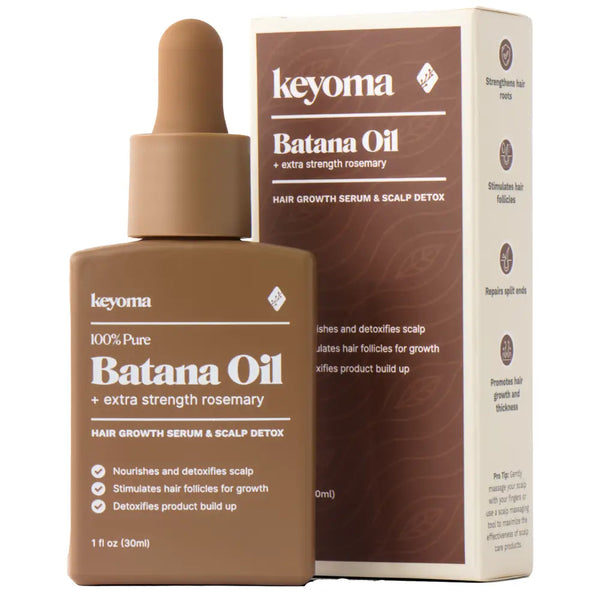
- 30-day supply $50
- 30% off for life $6
- Free haircare essentials kit $33
- Free custom wooden comb $10
- Free scalp massager $15
- Free eco-friendly travel bag $8


